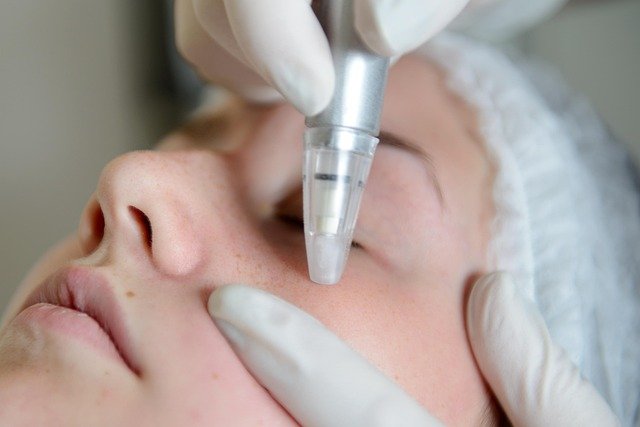Laser Skin Renewal: Restore Youthful, Radiant Skin
Discover how laser skin rejuvenation can refresh your complexion without surgery. This non-invasive approach uses targeted laser energy to stimulate collagen, reduce lines, fade sun damage, and smooth texture. Learn benefits, risks, preparation tips, and what to expect so you can choose the right laser treatment for healthier, more radiant skin.

Laser skin rejuvenation has become a leading non-surgical option for people who want to improve their skin’s tone, texture, and overall appearance. By delivering controlled bursts of laser energy to the skin, practitioners trigger the body’s natural repair mechanisms, encouraging new collagen and elastin formation. The result is firmer, smoother skin and a more even complexion over time.
How laser skin rejuvenation works
During treatment, a focused beam of light penetrates the outer skin layers to create controlled micro-injuries. These tiny zones of damage prompt a healing cascade: inflammation clears away old cells, fibroblasts are activated, and fresh collagen and elastin are produced. Depending on the device and settings, lasers can target pigmentation, broken capillaries, fine lines, scars, or laxity. Healing and remodeling continue for weeks to months, so improvements often increase gradually after a session.
Common skin concerns treated
Laser procedures are adaptable and can address many issues, including:
- Fine lines and dynamic wrinkles
- Sun damage, age spots, and hyperpigmentation
- Uneven tone and rough texture
- Acne scars and other scarring
- Enlarged pores
- Redness, visible vessels, and rosacea-related flushing
- Mild to moderate skin laxity
The specific laser type, energy level, and number of sessions are chosen based on the condition being treated, your skin type, and your aesthetic goals. A personalized consultation helps identify the optimal approach.
Types of lasers and approaches
Lasers vary by wavelength and the tissue layers they affect. Broadly, options include:
- Non-ablative lasers: These heat deeper layers without removing the surface skin, promoting collagen with minimal downtime.
- Ablative lasers: These remove outer skin layers for more dramatic resurfacing but usually involve longer recovery.
- Fractional lasers: Both ablative and non-ablative variants can be delivered fractionally, treating microscopic columns while leaving surrounding skin intact to speed healing.
Choosing between these options depends on how aggressive the treatment needs to be and how much recovery time you can allow.
Benefits of choosing laser rejuvenation
Laser skin treatments offer several advantages compared with surgical procedures or some topical therapies:
- Non-invasive: No surgical incisions or general anesthesia are required in most cases.
- Shorter downtime: Many patients resume normal activities quickly, especially with non-ablative or fractional approaches.
- Customizable: Settings and devices can be tailored to specific concerns and skin types.
- Progressive improvement: Results typically evolve over weeks as collagen rebuilds, with some immediate benefits visible afterward.
- Durable outcomes: With proper maintenance and sun protection, improvements can last months to years.
- Synergy with other treatments: Lasers can be combined with injectables, peels, or skincare routines for enhanced results.
Potential risks and side effects
When performed by experienced providers, laser rejuvenation is generally safe, but risks exist:
- Temporary redness, swelling, and mild discomfort
- Transient sensitivity or a sunburn-like sensation
- Changes in pigmentation, including temporary darkening or lightening; people with darker skin tones may have increased risk
- Small risk of infection if aftercare is not followed
- Rare scarring with improper technique or poor healing
- Increased sun sensitivity following treatment
Careful pre-treatment assessment, conservative settings for higher-risk skin tones, and diligent aftercare reduce complications.
Preparing for treatment
To optimize safety and results, follow these steps before your appointment:
- Schedule a consultation with a qualified clinician to review your medical history and expectations.
- Avoid tanning and minimize sun exposure for at least two weeks beforehand.
- Stop certain topical agents like retinoids or exfoliants as directed by your provider.
- Inform your practitioner about any medications or supplements you take that could increase photosensitivity.
- Arrive with clean skin—no makeup, perfumes, or heavy products.
- Arrange transport if sedation or strong numbing agents will be used.
What to expect during and after a session
A typical appointment includes cleansing the skin and applying topical anesthetic if needed. You will wear protective eyewear while a handheld device is moved across targeted areas. Sessions usually last 30 to 60 minutes depending on the size of the area treated. You may feel warmth, tingling, or mild snapping sensations.
Immediately afterward your skin may look red and feel sensitive, similar to a sunburn. Your provider will give aftercare instructions, often including gentle cleansing, moisturizers, and strict sun protection. Some treatments produce flaking or peeling as the skin renews. Most people can return to routine activities quickly, though more aggressive resurfacing can require several days to a week of recovery.
Sample cost ranges
| Treatment type | Typical cost range (per session) |
|---|---|
| Non-ablative fractional | $200 - $800 |
| Ablative resurfacing | $1,000 - $3,000 |
| Light vascular or pigment lasers | $150 - $600 |
Costs vary widely by clinic, device, region, and the number of sessions required. Consult your provider for an accurate quote.
Choosing the right provider
Select a reputable clinic with experienced, credentialed staff. Look for before-and-after photos, client reviews, and a transparent consultation process that addresses risks and expected outcomes. A trustworthy practitioner tailors treatment to your skin type and clearly explains pre- and post-care instructions.
Laser skin rejuvenation can be a powerful tool to refresh your complexion and treat a variety of skin concerns without surgery. By understanding how the treatments work, what to expect, and how to prepare, you can make an informed choice that aligns with your goals. Always consult a qualified skincare professional to determine the safest and most effective plan for your individual needs.
This article is for informational purposes only and should not be considered medical advice. Please consult a qualified healthcare professional for personalized guidance and treatment.






